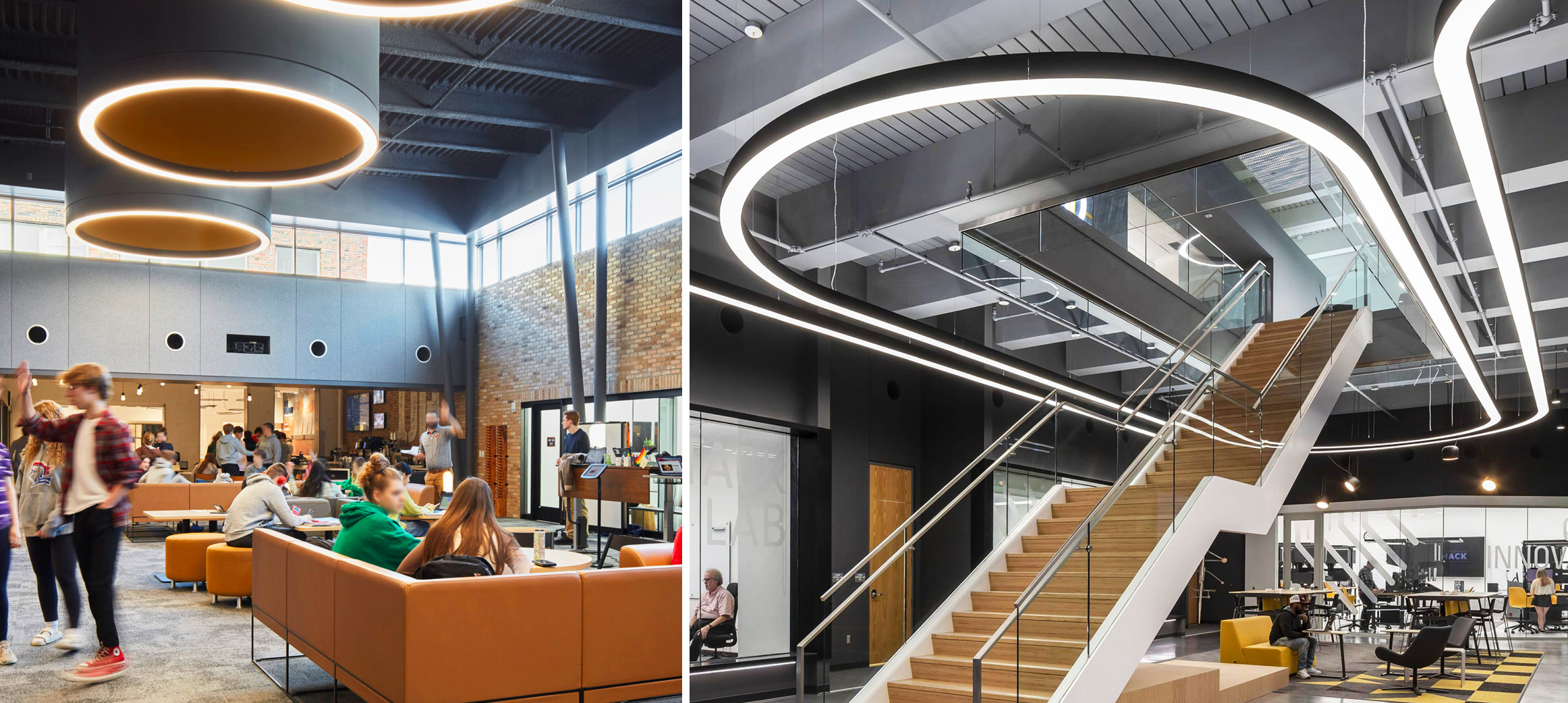Architectural lighting plays a pivotal role in shaping the learning environments of schools and universities. From classrooms and laboratories to libraries and auditoriums, lighting design influences student engagement, academic performance, and overall well-being. However, implementing effective lighting solutions in educational settings comes with its own set of challenges and rewards.
Challenges
Adaptability: Educational facilities must cater to a diverse range of activities, necessitating lighting systems that can adapt to varying needs throughout the day. From lectures to multimedia presentations, each space requires tailored illumination to support its specific functions.
Energy Efficiency: Balancing the need for adequate lighting with energy conservation is a perpetual challenge for educational institutions. High energy consumption not only leads to increased operational costs but also contributes to environmental impact. Implementing energy-efficient lighting solutions is essential to address this challenge while maintaining optimal lighting levels.
Visual Comfort: Glare, flicker, and uneven lighting can cause visual discomfort and fatigue among students and faculty members. Ensuring uniform illumination, minimizing glare, and selecting fixtures with high color rendering properties are crucial for creating visually comfortable learning environments.
Compliance: Educational facilities must adhere to lighting standards and regulations set forth by organizations like the Illuminating Engineering Society (IES) and the American National Standards Institute (ANSI). Meeting illuminance levels, uniformity ratios, and other lighting criteria ensures that educational spaces are adequately lit while promoting visual clarity and comfort.
Rewards
Enhanced Learning Environments: Thoughtfully designed lighting positively impacts student engagement, concentration, and academic performance. Proper illumination levels and color temperatures create an atmosphere conducive to learning and information retention.
Flexibility and Control: Integrating smart lighting systems equipped with sensors and controls offers educators and facility managers the flexibility to adjust lighting settings based on specific needs and preferences. Personalized control over brightness levels, color temperatures, and lighting schedules allows for optimal customization of educational spaces.
Sustainability: Energy-efficient lighting solutions reduce operational costs and contribute to environmental sustainability by lowering greenhouse gas emissions and resource consumption. Investing in renewable energy sources further enhances the sustainability profile of educational institutions.
Aesthetic Appeal: Well-designed lighting enhances the aesthetic appeal of educational spaces, inspiring creativity and collaboration among students and faculty members. Creative lighting schemes and fixture selections add visual interest and character to school and university buildings, fostering a conducive environment for learning and innovation.
Navigating the challenges and reaping the rewards of architectural lighting in schools and universities requires a comprehensive approach that addresses adaptability, energy efficiency, visual comfort, and compliance. By leveraging innovative lighting solutions, educational institutions can create dynamic learning environments that foster academic excellence and student well-being.
LUMOS K12 & Higher Ed Projects













No Comments.